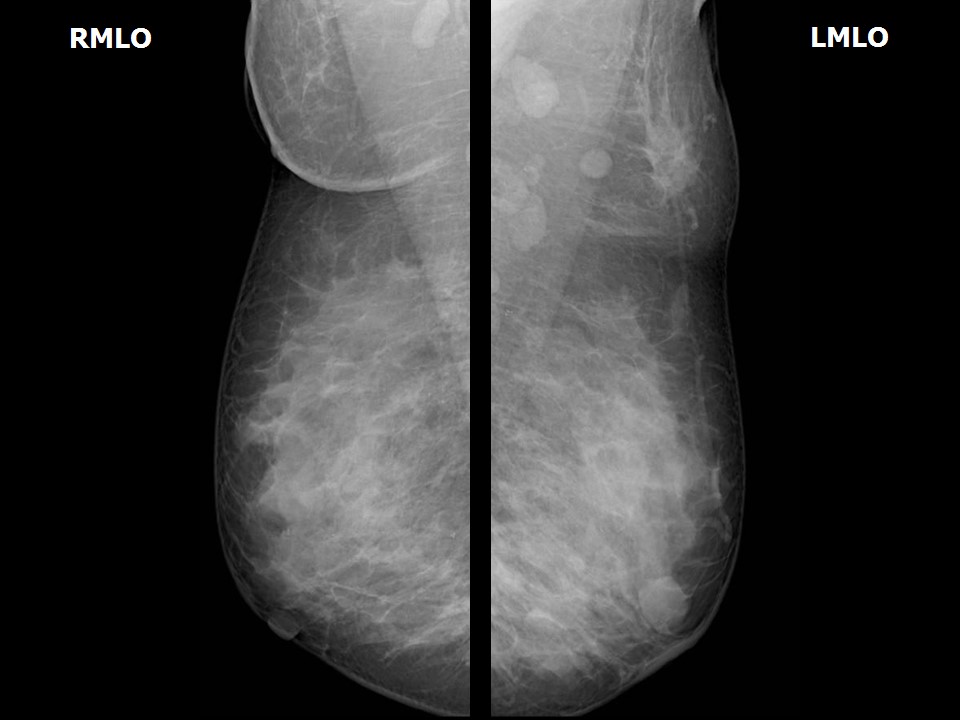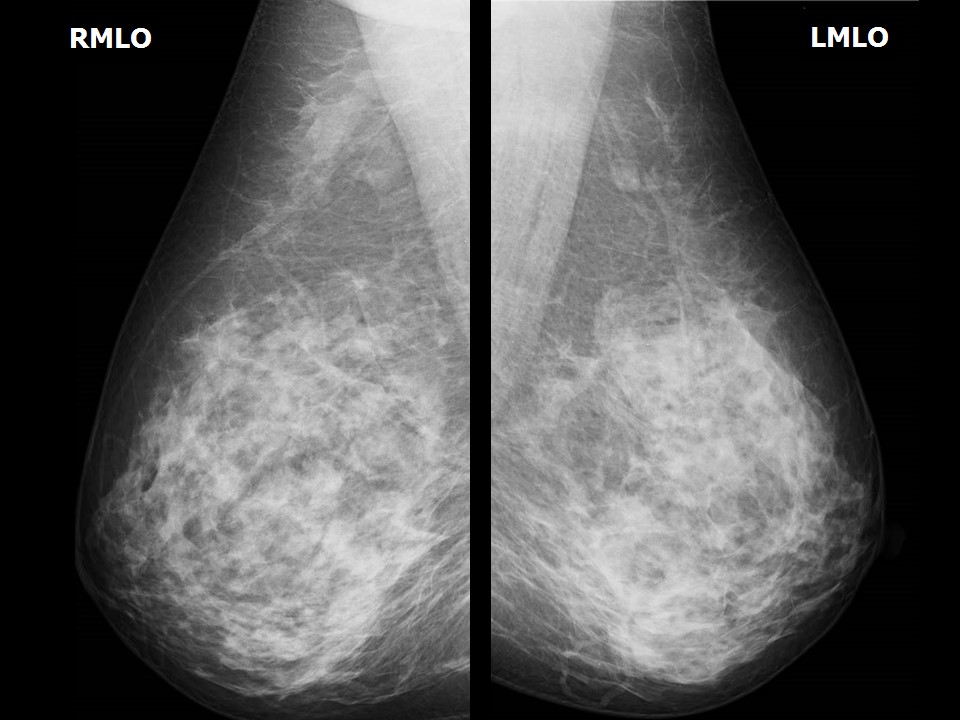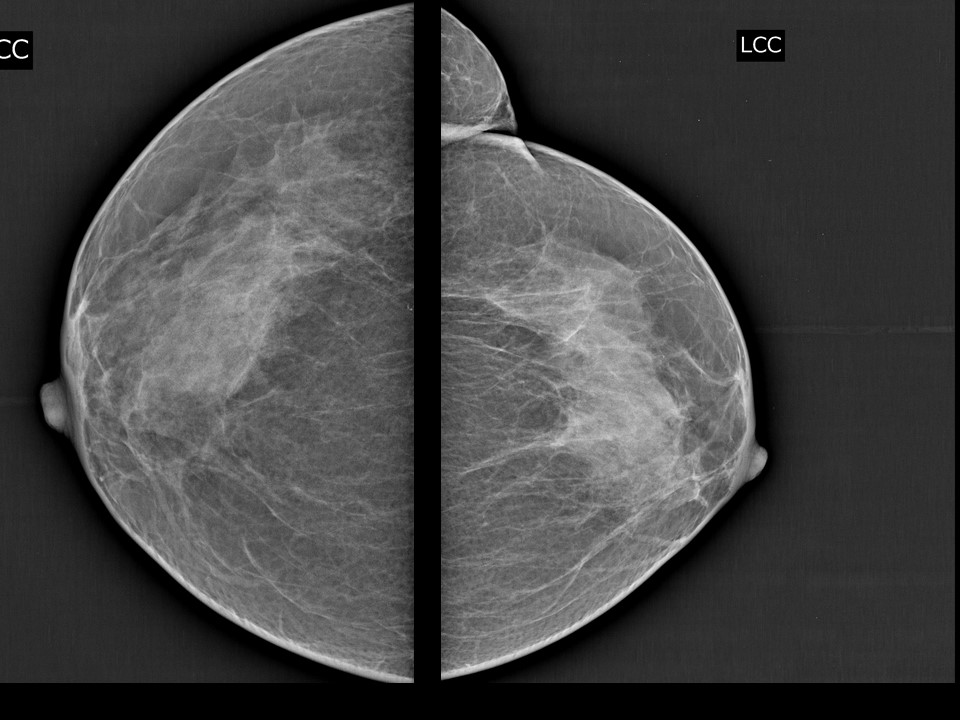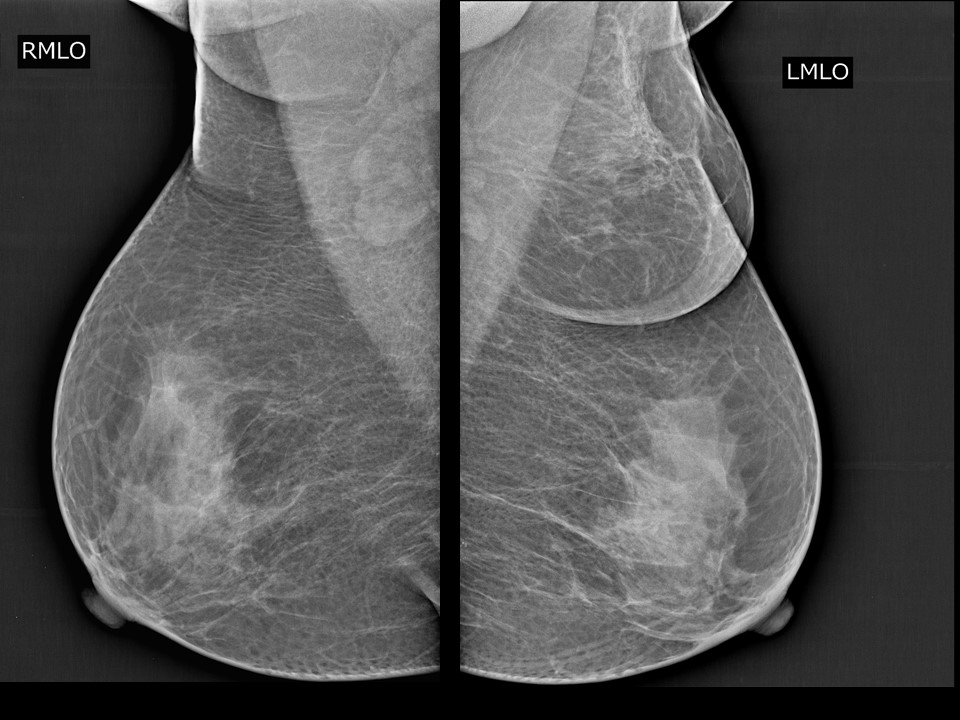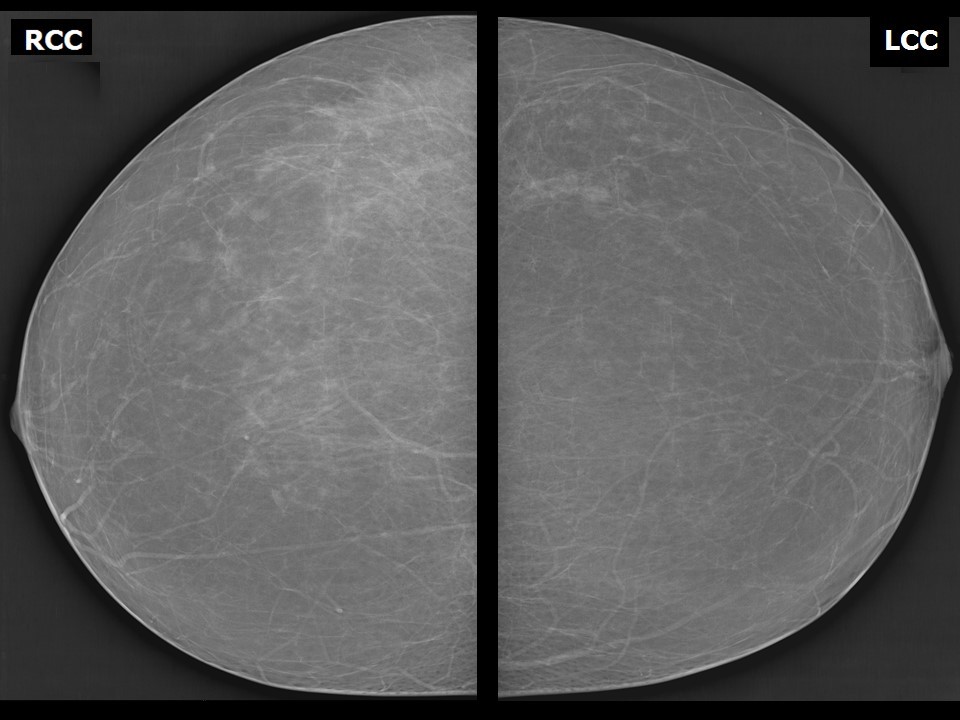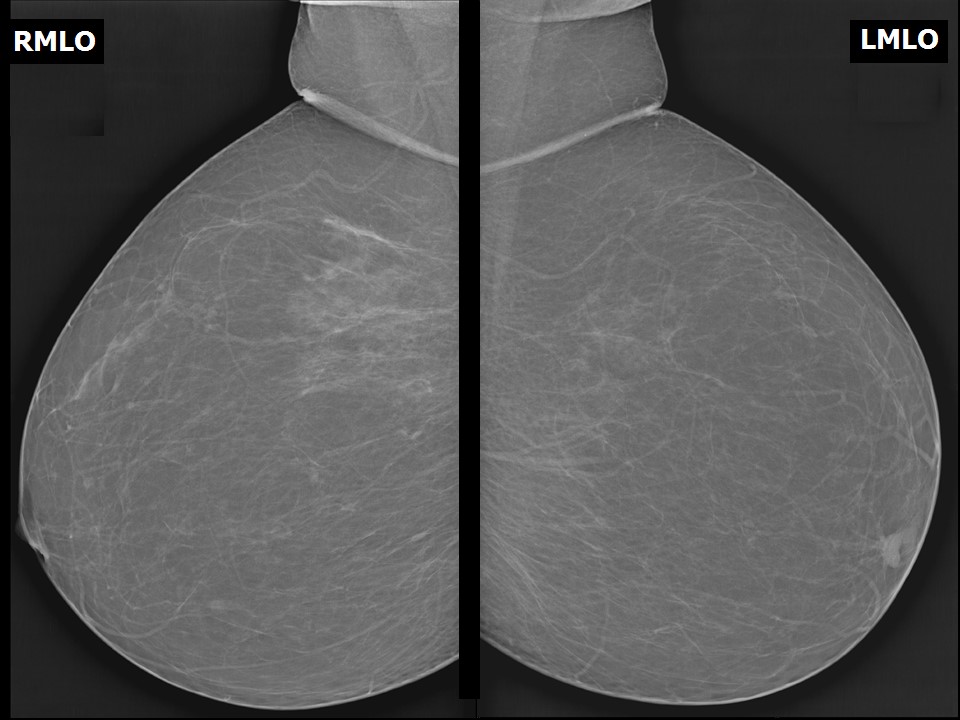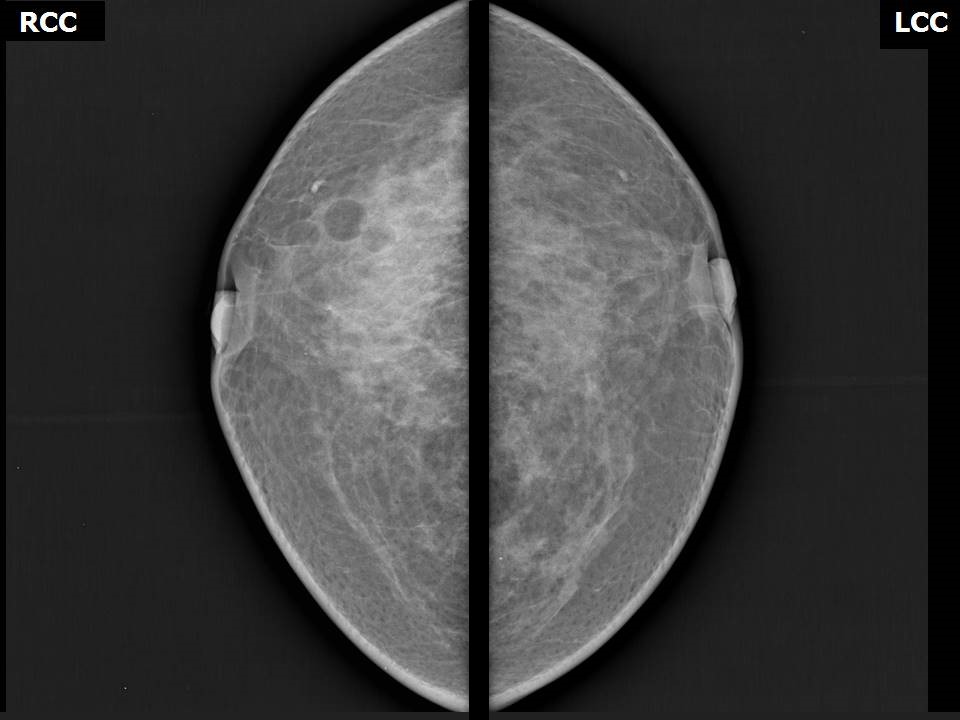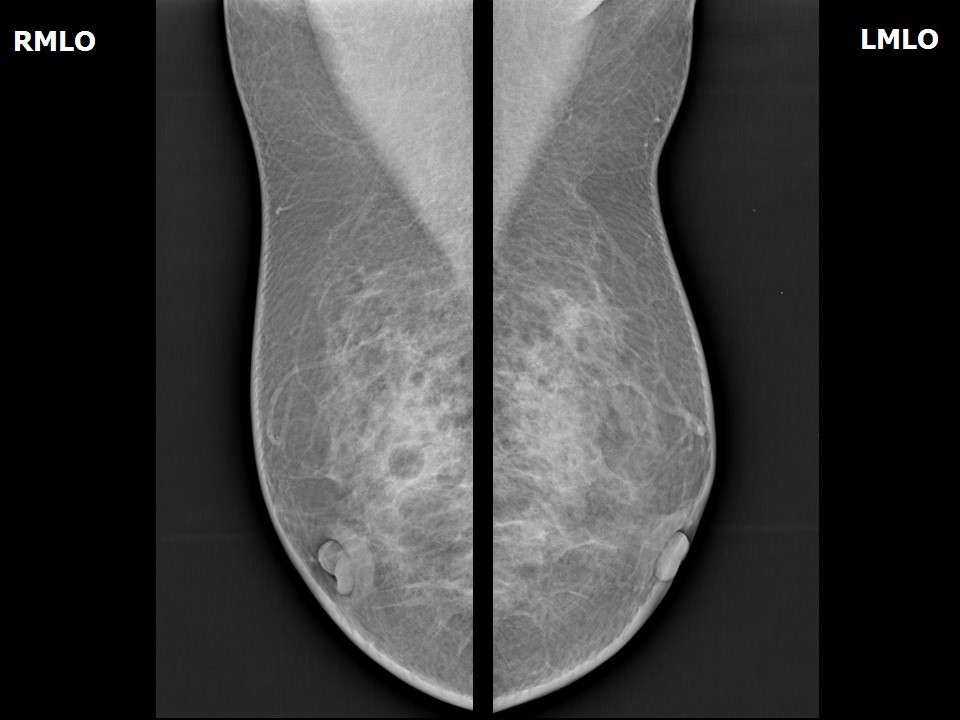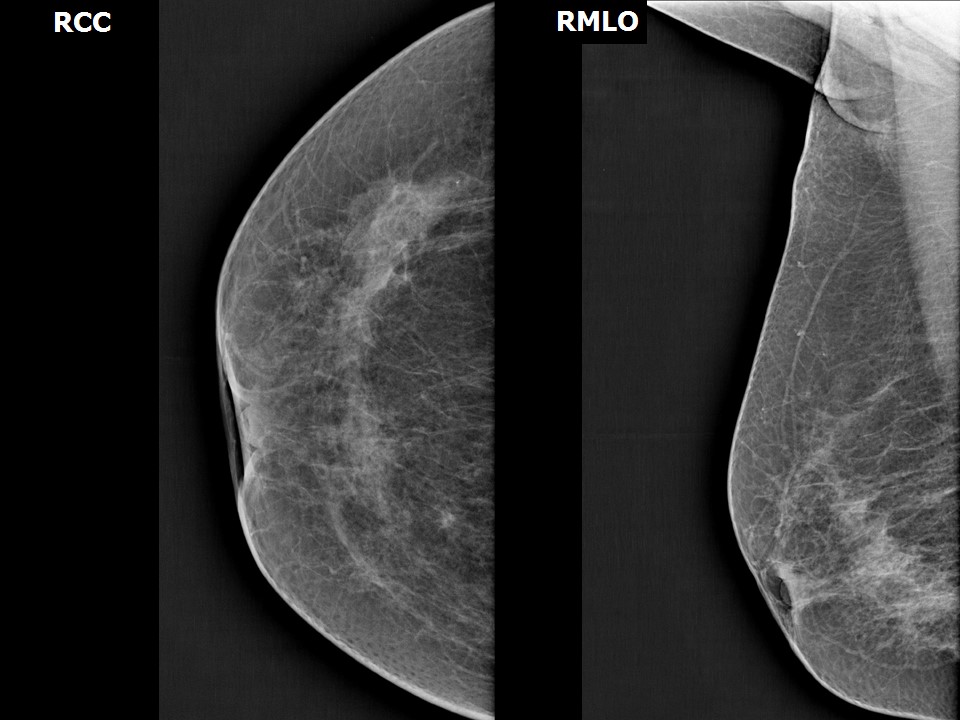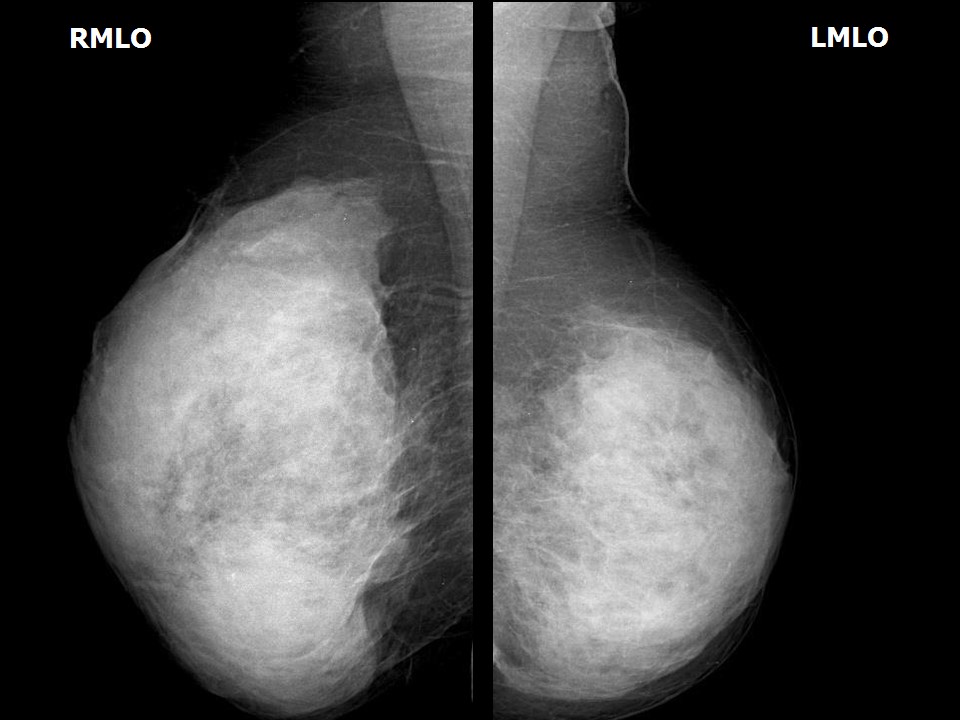Home / Training / Manuals / Atlas of breast cancer early detection / Learning
.png)
Click on the pictures to magnify and display the legends

Click on this icon to display a case study
Atlas of breast cancer early detection
Filter by language: English / РусскийBreast imaging – Mammography interpretation – Understanding the normal mammogram – Physiological variations |
Breasts can have physiological changes, and it is important to be able to recognize these when evaluating the normal mammogram. The normal variants commonly seen are the following:
Polymastia (accessory breasts) An accessory breast is the presence of breast tissue in addition to the normal breasts. The accessory breast may be present anywhere along the embryological mammary line (from the anterior axillary fold to the inguinal region). Inverted nipple A mammography finding of inverted nipple is characterized by nipple inversion in the absence of an underlying retroareolar or parenchymal lesion. The breast parenchyma does not reveal a suspicious mass or microcalcifications. There is no evidence of surgical intervention or trauma. The diagnosis of physiological inverted nipple is then confirmed. It is of three grades:
Grade 1 inverted nipple Grade 2 inverted nipple Grade 3 inverted nipple Asymmetrical breast tissue
When an area of one breast has a different volume from the same area of the other breast, it is called asymmetry. Asymmetrical breast tissue is usually normal and caused by hormonal changes during puberty that vary in both breasts. An absence of mass and microcalcifications within the asymmetry confirms that it is a normal variant. An asymmetrical volume of fibroglandular parenchyma with no features of architectural distortion or underlying mass is a common finding on mammography.
Some other normal variants
|
Click on the pictures to magnify and display the legends
Click on this icon to display a case study
25 avenue Tony Garnier CS 90627 69366, LYON CEDEX 07 France - Tel: +33 (0)4 72 73 84 85
© IARC 2025 - Terms of use - Privacy Policy.
© IARC 2025 - Terms of use - Privacy Policy.




